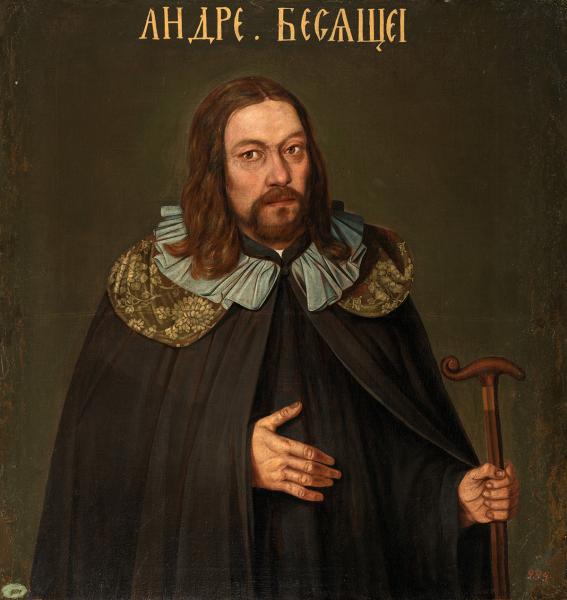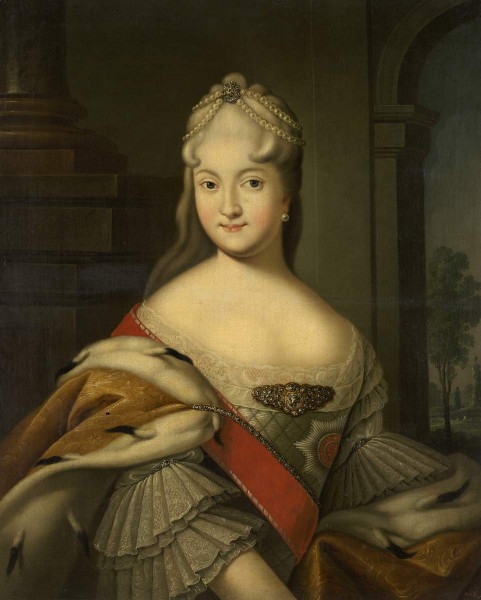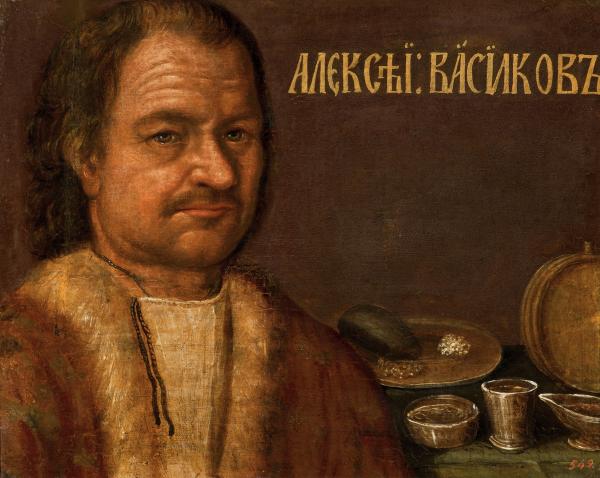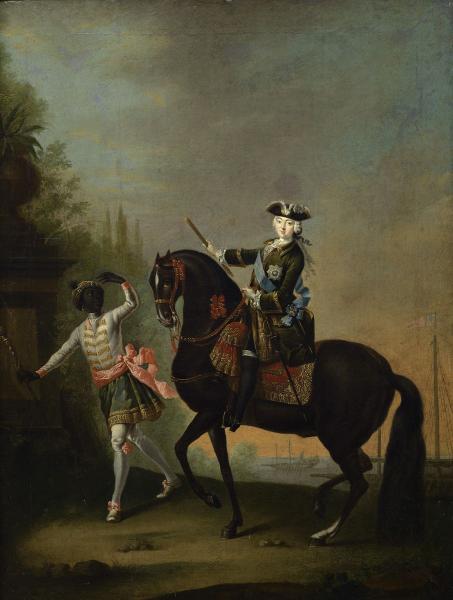The artist is unknown

Andrey Matveevich Apraksin (1663-1732)-brother of Queen Martha Matveevna, Admiral General F. M. Apraxine and senator p. M. Apraksina. Tsar’s stolnik John Alekseevich. Chief Schell of Peter I, from 1724-Count. He wore the Shutovsky rank of a member of the collegium of the cardinals of the “all-navigable cathedral of the most all-odd prince-pop” and the nickname Bezing.
Peter I. Time and environment. SPb, 2015. With. 123.
All participants had nicknames "All -woeing cathedral ”, in that number, Peter himself, who was called by protodiacon pytirim. The fact that under the name Bright is hiding the beloved steward of Tsar John Alekseevich, the brother of Tsarina Martha Matveevna and Admiral General Fedor Matveevich, Andrey Matveevich Apraksin, first indicated p. N. Petrov (cat. historical exhibition. With.fifteen. No. 42). This nickname Apraksin could receive in September 1696 when "…The sovereign Tsar and Grand Duke Pyotr Alekseevich deigned to go on a trip to the Trinity in the Sergiev Monastery and at that time at that of the above monastery, at the holy gate, the son of Zhelyabuzhsky with his son, his son, was beaten by his brow, the great sovereign, the son of Semen on Andrei Matveev’s son Apraksin , in his battle and in the injury that he, Andrei, beat them with mischief in the last 204 (1696) August 18 day, in the Kalmyk herd near Filya. And the great sovereign in the Preobrazhensky case ordered that: Vasille Zhelyabuzhsky and his son Semyon for their fight and for the uvechye to dismiss him, Andrei, the money twice against their salaries, and for the false fairy tale that he said falsely, and he pointed out for the mischief. The great sovereign to teach him, Andrei, punishment, to beat the whip mercilessly, and to simplify the pious sovereign and Grand Duchess Matveevna to reproduce him, Andrei, the great sovereign did not indicate…”(Zhelyabuzhsky. With. 298-299).
Thus,. M. Apraksin could receive a nickname not earlier than October 1696. And since the bearded close associates lost their beards no later than August 30, 1698, the portrait can most likely be dated time between October 1696 and August 1698. Its good safety should be emphasized: only small author’s edits were revealed.
N. X. Unknown artist. SPb, 2012. With. 29.
“Preobrazhenskaya series” – the rarest monument of early secular art in Russia. Her characters were traditionally called images of the jesters of Peter I. The name “Preobrazhenskaya series” was proposed. M. Moleva and e. M. Belyutin and arose in connection with the inventory of the Preobrazhensky Palace near Moscow, which included portraits (“persons”) Yakov Fedorovich Turgenev, Andrei Brownie, Matvey Filimonovich Naryshkin, as well as the “Picture of Alexei Lenin with Cloral”. The closest associates of Peter the Time “I began glorious affairs”, they were participants in the unique association. Documents drawn up by the king himself testify to what it was called “the most crazy crazy cathedral of the most all-food prince-papa”. Researchers unanimously attribute the beginning of “cathedrals” by the end of the 1680s-the beginning of the 1690s.
The basis of the series is eight portraits, the researchers supplemented it with a portrait of the “First Russian Soldier” by Sergey Leontyevich Bhavostov. However, apparently, the portraits were at least eleven, in the inventory of 1739 the “person of Prince Fedor Yuryevich Romodanovsky”, “Person of Nikita Moiseevich Zotov”, “Person of Ivanovich Buturlin”, “The character of the fool Timokhi”, whose location is unknown, were also included in the inventory of 1739.
It is believed that the series was created for the new palace, built in 1692 on the shore of Yauza near the soldiers’ courtyards of the Preobrazhensky regiment. Portraits were there, apparently until the last quarter of the 18th century, and when the palace was dilapidated, they were transported to St. Petersburg, stored in the meeting of the imperial Hermitage, and then were transferred to the Gatchinsky Palace.
In 1929, almost the entire “Preobrazhenskaya series” entered the Russian Museum, but two years later, portraits of the stolnik and. AND. Shchepothev and unknown in a brown fur coat are transferred from timing to the GTG.
The main one for the dating of all known portraits of the series is the following historical fact: images of bearded people (Turgenev, Naryshkin or Verigin) could be executed until August 26–30, 1698, when Peter returned from abroad began to cut his beards with his boyars who gathered for the meeting king in the same Preobrazhensky Palace. Thus, the dating of the series is the most likely-the 1690s (until 1698). Most researchers believe that the portraits of the series were written by Russian masters, painters of the arms chamber, whose services Peter used especially widely in the 1690s-early 1700s.
N. X. Unknown artist. SPb, 2012. With. 23.


